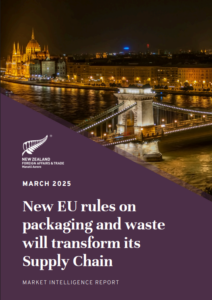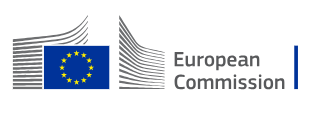More Changes to Packaging: What Does It Mean for You?
Big Shifts Ahead for NZ Exporters: Understanding the EU’s Packaging and Packaging Waste Regulation (PPWR)
On February 11, 2025, the European Union officially introduced the Packaging and Packaging Waste Regulation (PPWR) — a sweeping new law designed to push for more sustainable packaging practices across all industries. With full rollout beginning mid-2026 and stretching out to 2040, these changes aren’t just big news for Europe — they directly affect New Zealand businesses exporting to the EU, too.
To help navigate what’s coming, the Ministry of Foreign Affairs & Trade (MFAT) released a comprehensive summary. In this blog, we’re breaking it all down, highlighting key points, and sharing how it could impact your packaging processes — and your bottom line.
Let’s dive in.
What Is the PPWR, Really?
The PPWR is all about sustainability — cutting down on waste, encouraging recycling, and ditching unnecessary packaging. Whether you’re sending skincare, wine, coffee, or electronics to Europe, your packaging will need to meet specific eco-standards — or you might face trade issues.
The regulation targets:
- Design (how packaging is made and what it’s made from)
- Use (where and how packaging is used)
- Disposal (how packaging is managed after use)
For NZ exporters, the changes aren’t optional. They’re essential for maintaining access to the EU market.
MFAT Summary of EU Packaging Regulation

Single-Use Plastics: Phased Out by 2030
What’s Happening?
By January 2030, the PPWR will ban several single-use plastic items. This is a big one, and it’s going to hit the hospitality and food industries hardest — especially the HORECA sector (Hotels, Restaurants, and Catering).
What’s Affected?
According to MFAT, expect to say goodbye to:
- Plastic packaging for pre-packed fruit & veg under 1.5kg
- Disposable food and beverage containers used inside venues
- Single-portion items like condiment sachets
- Small hotel-size cosmetic containers
- Ultra-light plastic bags
Our Take?
Honestly, this makes sense. Less fiddly packaging = less waste. It may mean rethinking convenience, but it’s a win for the planet — and a great chance for brands to innovate.
♻️ Recyclability & Compostability: Starting 2028–2030
What’s Required?
By 2030, all packaging sold in the EU must be recyclable and designed for that purpose from the get-go. No more mixing materials that can’t be separated, no more hard-to-recycle gimmicks.
On top of that, by February 2028, certain packaging types must be home or industrial compostable, including:
- Tea and coffee bags
- Coffee pods
- Fruit and veg sticky labels
Challenges?
Yep, there are a few. The success of compostable packaging depends heavily on:
- Waste infrastructure (are composting bins even available?)
- User awareness (are people actually separating waste properly?)
So, while the move is positive, it’ll take serious effort from both manufacturers and consumers.
♻️ Minimum Recycled Content: Stepping It Up by 2040
This one’s a game changer.
The EU is setting strict targets for how much recycled material must be included in packaging.
Here’s the breakdown:
- By 2030: Single-use plastic beverage bottles must have at least 30% recycled content
- By 2040: That target jumps to 65%
So, if you’re in the food and beverage game — or any industry that relies on plastic packaging — it’s time to start sourcing recycled materials and investing in better supply chains.
Packaging Minimization: Less Is More
Ever bought a product in a box that’s waaay too big, with a fake bottom or thick double walls? That’s exactly what the EU wants to eliminate.
By January 2030, packaging must be:
- Minimized in size and weight
- Optimized for function, not appearance
- Free from “illusion packaging” that exaggerates product size
This is about cutting excess, improving transparency, and reducing shipping waste — a win-win for businesses and consumers.
So… What Does This Mean for You?
If you’re a New Zealand business exporting to the EU, the PPWR is your wake-up call. Whether you’re in food, wine, cosmetics, or any other product category that requires packaging, you’ll need to:
✅ Review your current packaging materials
✅ Audit your supply chain for sustainability and compliance
✅ Collaborate with packaging suppliers to explore recyclable, compostable, or reusable options
✅ Stay up to date on rollout timelines to avoid last-minute disruptions
Opportunities for Innovation
While this regulation may feel like a headache at first, it’s also an incredible opportunity for innovation and market leadership. Brands that align with eco-conscious values are already winning over consumers — and this regulation will only accelerate that trend.
Here’s how to turn compliance into competitive edge:
- Invest in smart packaging design that balances form, function, and sustainability
- Test alternative materials like bioplastics, paper-based laminates, or compostable films
- Highlight your eco-efforts in branding and marketing to connect with sustainability-driven EU consumers
Final Thoughts from Hi-Tech Packaging
At Hi-Tech Packaging, we’re always tuned into global packaging trends, and the PPWR is one of the biggest shifts we’ve seen in years. It’s not just about following the rules — it’s about staying ahead of them.
We’re already having these conversations with many of our clients, and we’re here to help you make the transition too. Got questions? Want to understand what these changes mean for your business and your brand?
Till next time,
The team at Hi-Tech Packaging



